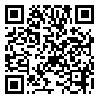Volume 13, Issue 2 (March & April 2022)
BCN 2022, 13(2): 215-224 |
Back to browse issues page
Neda Ghadamgahi Sani1 
 , Malahat Akbarfahimi *1
, Malahat Akbarfahimi *1 

 , Shadi Akbari2
, Shadi Akbari2 

 , Mehdi Alizadeh Zarei1
, Mehdi Alizadeh Zarei1 

 , Ghorban Taghizadeh1
, Ghorban Taghizadeh1 



 , Malahat Akbarfahimi *1
, Malahat Akbarfahimi *1 

 , Shadi Akbari2
, Shadi Akbari2 

 , Mehdi Alizadeh Zarei1
, Mehdi Alizadeh Zarei1 

 , Ghorban Taghizadeh1
, Ghorban Taghizadeh1 


1- Department of Occupational Therapy, School of Rehabilitation Sciences, Iran University of Medical Sciences, Tehran, Iran.
2- Department of Cognitive Neuroscience, Faculty of Education and Psychology, University of Tabriz, Tabriz, Iran.
2- Department of Cognitive Neuroscience, Faculty of Education and Psychology, University of Tabriz, Tabriz, Iran.
Abstract:
Introduction: Attention-deficit/hyperactivity disorder (ADHD) is one of the most common childhood psychiatric disorders characterized by poor attention and subsequently lower learning abilities than normal children. This study aimed to compare the effectiveness of neurofeedback and perceptual-motor exercises as two common nonpharmacological treatments for visual attention.
Methods: A total of 40 combined medicated ADHD children (aged 5-12 years) were randomly allocated into two groups: neurofeedback training and perceptual-motor exercises. Visual attention and motor proficiency were assessed before and after the treatment by continuous performance test (CPT) and Bruininks-Oseretsky Test (BOT), respectively.
Results: According to repeated measures analysis of variance (ANOVA), both groups showed significant improvement in three attention-related areas of CPT, including reaction time, omission, and commission errors (P<0.001), while the difference between the two groups was not significant (P>0.05). However, in the perceptual-motor exercises group, motor proficiency improved significantly (P<0.01).
Conclusion: Neurofeedback training intervention, as well as perceptual-motor exercises, are effective in improving ADHD symptoms, and given the similar effect of both interventions and their lack of side effects, perceptual-motor exercises appear to be the more appropriate option for reducing symptoms of ADHD, because of its additional effect on motor proficiency, rich content of purposeful activities, and social interactions.
Methods: A total of 40 combined medicated ADHD children (aged 5-12 years) were randomly allocated into two groups: neurofeedback training and perceptual-motor exercises. Visual attention and motor proficiency were assessed before and after the treatment by continuous performance test (CPT) and Bruininks-Oseretsky Test (BOT), respectively.
Results: According to repeated measures analysis of variance (ANOVA), both groups showed significant improvement in three attention-related areas of CPT, including reaction time, omission, and commission errors (P<0.001), while the difference between the two groups was not significant (P>0.05). However, in the perceptual-motor exercises group, motor proficiency improved significantly (P<0.01).
Conclusion: Neurofeedback training intervention, as well as perceptual-motor exercises, are effective in improving ADHD symptoms, and given the similar effect of both interventions and their lack of side effects, perceptual-motor exercises appear to be the more appropriate option for reducing symptoms of ADHD, because of its additional effect on motor proficiency, rich content of purposeful activities, and social interactions.
Keywords: Attention-deficit/hyperactivity disorder, Neurofeedback, Perceptual-motor, Attention, Children, Randomized controlled trial
Type of Study: Original |
Subject:
Cellular and molecular Neuroscience
Received: 2020/06/5 | Accepted: 2021/02/21 | Published: 2022/03/1
Received: 2020/06/5 | Accepted: 2021/02/21 | Published: 2022/03/1
| Rights and permissions | |
 |
This work is licensed under a Creative Commons Attribution-NonCommercial 4.0 International License. |


